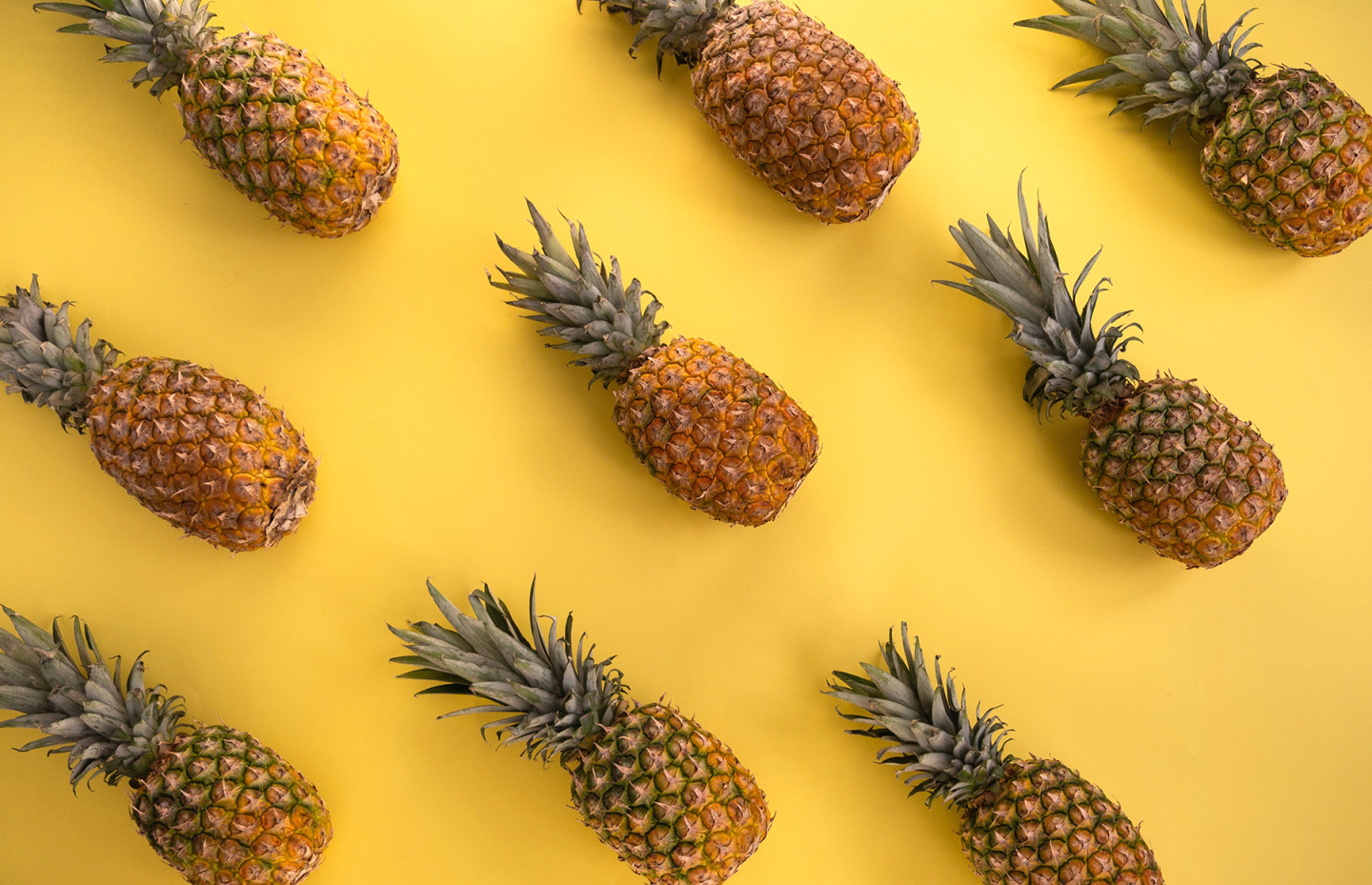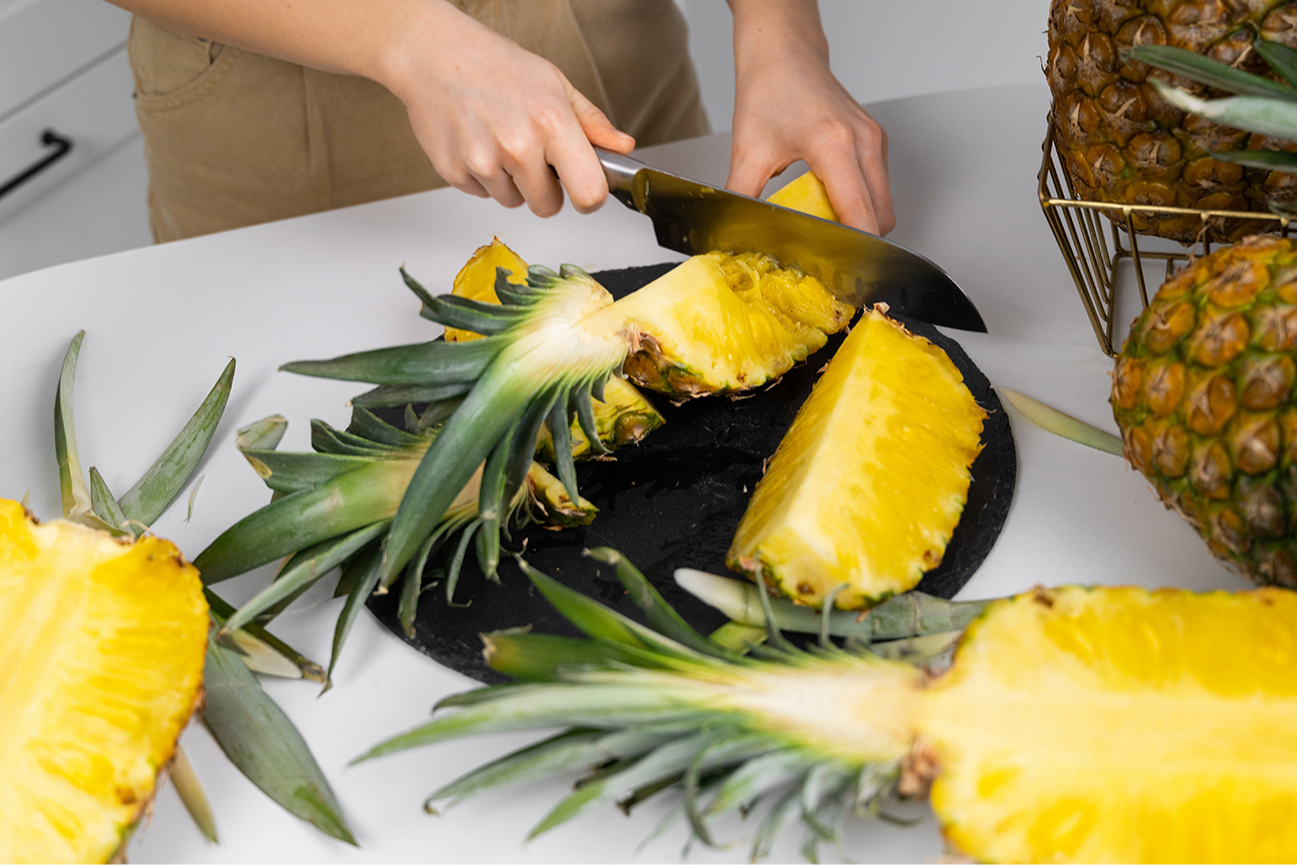
You can now buy tropical fruits at any time of the year. It’s no longer possible to choose a sweet pineapple based on seasonality alone. The chef’s advice will come to the rescue. Let’s figure out what signs you can use to recognize the best pineapple.
- How to choose a pineapple
- How to clean and store
Pineapple is a sweet tropical fruit rich in vitamins and microelements. Due to its juiciness, it is often used in salads, desserts, and juice is squeezed out of it. And the bromelain enzyme it contains helps soften meat, so pineapple can be added to marinades.
The pulp of the fruit contains 58% of the daily value of vitamin C (1) and a wide variety of antioxidants. True, despite the bright taste and benefits, you should not overdo it: scientists believe that excessive consumption of pineapples can cause allergies and stomach upset. Doctors do not recommend eating it while taking antibiotics from the amoxicillin group without consultation (2).
The ripest pineapple can be selected by color, smell and palm
When unripe, pineapple is difficult to peel, and its pulp will irritate the mucous membranes of the mouth. Alas, this fruit cannot ripen when cut, so it is important to choose a ripe fruit. Chef of the Barceloneta restaurant Alexey Pavlov said “RBC Style”, how to find the sweetest pineapple on the shelf.
How to choose a pineapple: 4 simple ways
«The main way is to take it by the upper inflorescences and try to pull out a couple of leaves from the center of the plume. If they come out easily, then the fruit is ripe; if not, it means it’s not ripe,” Alexey Pavlov shares his secret.
1. Look at the color of the fruit
A good pineapple has a smooth oval shape and weighs on average about 2 kg. The skin should be bright yellow or orange with streaks of green or brown. It definitely has scales with so-called eyes, which have already dried out. On top of the fruit there is a sultan – a lush cap of greenery.
«The color of the leaves should be green; if they are a little windy, that’s good,” says Alexey Pavlov. – When there is a lot of brown color, it means the fruit has been kept warm to ripen. No damage or cuts are allowed on the surface of the pineapple.”
2. Press and knock
A ripe pineapple feels slightly pressed to the touch. If you cannot feel the pulp, the fruit is not yet ripe, and if it is pressed too hard, the fruit is overripe. You can knock on the pineapple. As with watermelon, the tapping sound will tell you if the fruit is ripe.
Observation chef: “There should also be a crunch when tapped. If it sounds hollow, it means the pineapple is good.”

To peel a pineapple, you first need to cut off the stem, then cut off the top with leaves, and then cut off the scales
3. Twist the plume
Sultan – green leaves on a pineapple that resemble a palm tree. In addition to the advice of trying to pull them out, you can twist them. The main thing is not to overdo it and not break the sultan. In a ripe fruit, the palm rotates easily, almost moving away from the fruit.
4. Sniff
You can find the sweetest pineapple by smell. Look for specimens that have a sweet, fruity but light aroma. If the fruit smells excessively, it is most likely overripe. And the one that doesn’t smell at all was cut off too early.
«You can also pay attention to the smell. If it is too bright, then there is a chance that the pineapple is overripe and has begun to ferment,” notes Alexey Pavlov.
How to peel and store pineapple
«The easiest and safest way to peel a pineapple is to cut off the stem so it stands firmly on the board, then cut off the top with the leaves, explains the chef. – And then cut off the scales with longitudinal movements of the knife along the pineapple. It is better to store peeled pineapple in a box with holes and not in the refrigerator.”
The first impulse is to put any fruit in the refrigerator. However, do not rush to do this. Pineapple absorbs the odors of other foods very well, and in the cold it loses its sweetness. It is best to place the fruit in a dark, moderately cool place.
